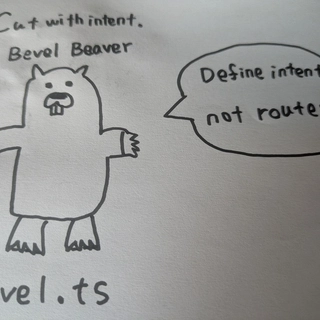They promised speed, simplicity, and a better DX. What we got was a set of beautiful lies, niche fantasies, and philosophical dead ends.
⚠️ Introduction: The Age of Frontend Disillusionment
Modern frontend frameworks love to sell a dream.
They’ll tell you they’re faster than React, more minimal than Vue, more elegant than Svelte.
But dig beneath the DX sugarcoating, and what you find isn’t revolution — it’s confusion, overengineering, or outright regression.
Let’s talk about the three self-proclaimed rebels of modern frontend:
- Astro — The Gatsby Ghost in Island Clothing
- Qwik — The Resumable Kernel That Forgot the Humans
- Solid — The Signal Soloist in React's Orchestra
Together, they form the Zukkoke Three — each chasing a different ideal, but none equipped to win the war.
🏝️ Astro – The Static Dream That Dies When JS Returns
Astro sells the fantasy of zero-JS by default. Clean HTML. Minimal payloads. Islands of interactivity.
It’s compelling — until reality hits.
Astro is just Gatsby rebranded. It inherits the same flaw:
It works great until your app grows. Then you’re back to hydrating islands, shipping frameworks, and juggling scripts.
Astro’s true nature is JAMstack nostalgia with a better DX. It’s not wrong — just obsolete.
In a world of RSC, SSR, and edge rendering, static-first is a limitation, not a feature.
And when complexity grows, you're back in the hydration swamp, writing client scripts to patch static reality.
Verdict: A beautiful façade. But scale it, and the illusion breaks.
⚙️ Qwik – C for the Web, Not for the People
Qwik is genius — technically.
It introduces resumability, serializing the execution context of the app. Like pausing a program mid-run and continuing it in the browser.
That’s not frontend. That’s compiler-level thinking.
It’s not designed for humans. It’s designed for machines.
Qwik doesn’t care about your joy, your structure, or your aesthetics. It cares about cold start time.
Everything is driven by performance obsession. No visual language, no design philosophy, no ergonomics. Just speed.
Qwik is the C of frontend frameworks.
Fast, low-level, and terrifyingly efficient. But like C, it doesn’t care if you enjoy writing it.
Qwik is like inventing inline assembly for UI — impressive, but no one wants to write it.
Frontend developers didn’t ask for a compiler playground. They asked for clarity, structure, and joy. Qwik gave them ASTs and resumable closures.
Verdict: A backend brain wearing a frontend mask. Brilliant but inhuman.
🧱 Solid – The Signal Soloist in React's Orchestra
Solid claims to be a faster, more precise React. And it is — technically.
Signal-based fine-grained reactivity is elegant and performant.
But beyond that, Solid changes very little:
- JSX stays
- Component patterns stay
- Developer experience is React-adjacent
Solid is trying to perfect React, not replace it.
In fact, Solid is a signal engine with a UI wrapper. Its only true innovation is reactivity granularity. Everything else is just React with better internals.
What does that mean for the rest of us?
- No new architecture.
- No new model for state or data.
- No bold vision.
Solid is a one-trick pony. A brilliant trick, yes — but a pony nonetheless.
Verdict: Strong tech, weak narrative. Safe, not transformative.
🧠 Why None of These Will Win
Each of these frameworks optimizes for something:
- Astro for simplicity
- Qwik for performance
- Solid for developer familiarity + reactivity
But none of them solve the core problem of modern frontend:
Too much freedom, not enough clarity.
They tinker at the edges of performance or DX, but they don’t bring structural relief. They don’t help you scale, collaborate, or reason clearly about your app’s shape.
The next real winner in frontend won’t be the fastest, or the most minimal.
It will be the one that brings structure back to chaos.
✨ What Comes After the Fantasy?
To move forward, we need a framework that understands:
- Structure > flexibility
- Intent > abstraction
- Clarity > cleverness
The future isn’t in reinventing rendering engines or micro-optimizing hydration. It’s in giving developers a map.
A place for everything. And everything in its place.
What if we had a framework where:
- Component trees were statically validated like type systems?
- Layout, dataflow, and permissions were declared, not inferred?
- Server & client boundaries were structural, not file-based?
That’s the revolution we’re waiting for.
🖚 Closing Thoughts
Astro is elegant but brittle.
Qwik is brilliant but alien.
Solid is fast but single-minded.
We’ve wandered through the forest of frontend fantasies. What we need now is architecture.
The frontend revolution won’t be won by performance. It will be won by structure.
Stay tuned. Or better yet: start designing it.




✍️ Author's Note:
I wrote this piece not to trash Astro, Qwik, or Solid — but to express a growing frustration with where frontend is heading.
We're optimizing for the wrong things:
– cleverness over clarity
– abstraction over intent
– speed over structure
These frameworks are fascinating experiments, but they fail to give us what modern teams actually need: shared mental models and architectural coherence.
This isn’t a teardown. It’s a call for what comes next.